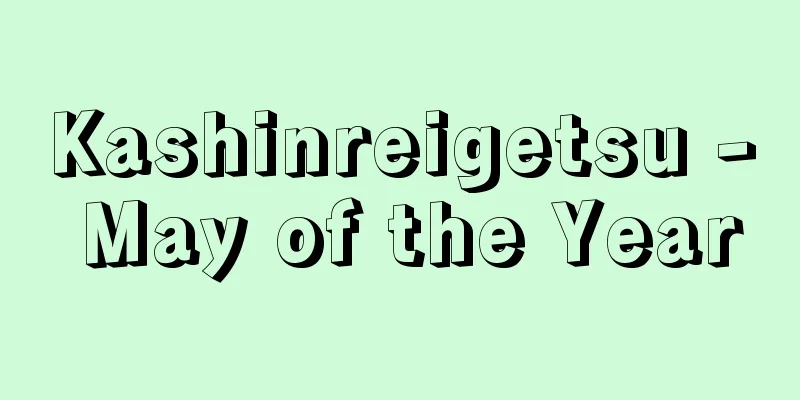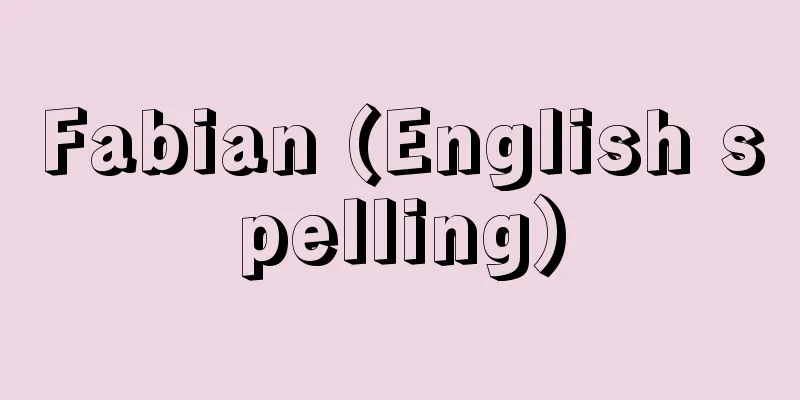River fishing - Kawazuri

|
In contrast to sea fishing, this refers to all freshwater fishing. Anglers often use the names of the target fish, such as sweetfish fishing, carp fishing, and crucian carp fishing. Depending on the fishing spot, it can also be referred to as river fishing, clear stream fishing, mountain stream fishing, or lake fishing. In the strict sense, river fishing is fishing in rivers in flatlands, and targets carp, crucian carp, Japanese crucian carp, and crayfish. Fishing near river mouths that are affected by the tides is also part of river fishing, but when the fish caught are saltwater fish such as black porgy, Japanese sea bass, mullet, and goby, it is generally not called river fishing but is named after the target fish. Clear stream fishing refers to fishing for sweetfish, dace, minnows, and released rainbow trout in the upper reaches of the river. There is no clear boundary between river fishing and clear stream fishing, but a clear stream is one where the water is a relatively good color, there are large rocks scattered around, and there are rapids. Stream fishing is done in mountain rivers, mainly fishing for char, yamame, and amago. In the lower reaches of mountain streams, you can fish for yamame and amago, and in the upper reaches, you can fish for char. Fishing in lakes and marshes is also called mountain lake fishing in places such as the Fuji Five Lakes in Yamanashi Prefecture, which are located at high altitudes. The main target fish are crucian carp, carp, smelt, minnows, and dace, but in Lake Shikotsu in Hokkaido, Lake Chuzenji in Tochigi Prefecture, Lake Saiko and Lake Motosu in Yamanashi Prefecture, and Lake Ashinoko in Kanagawa Prefecture, you can also catch kokanee salmon, thanks to the release of young fish by local fishing associations. In the marshes of the plains, you can catch crucian carp, crucian carp, carp, tanago, and crayfish, as well as huchen in the marshes of Hokkaido. Among these fish, the fishing ban and lift periods for sweetfish, char, yamame, and kokanee are determined by the recreational fishing regulations of each prefecture. These periods vary depending on the prefecture and fishing spot. Ayu fishing is allowed from June 1st until late autumn, but in parts of Tohoku, Akita, and Niigata prefectures, where the fish grow slower due to the delayed rise in water temperature, the fishing season is open until July. Iwana, yamame, and amago can be fished from March 1st until early autumn, but this also varies slightly depending on the prefecture. The closed season is set to protect young fish and spawning adult fish from overfishing, and there are restrictions on the size of fish that cannot be caught, that is, their body length, especially for iwana, yamame, and amago. For such recreational fishing regulations, please contact the inland water department of each prefecture office or the local fishery association. In addition, when fishing for freshwater fish, fishing rights are set in almost all areas, except for privately owned lakes and ponds, so local fishery associations must pay recreational fishing fees (fishing fees) approved by the prefectural governor. In Europe and the United States, the license system is strict, and there are strict restrictions on the number of fish that can be caught in a day, as well as on the fishing fees. When you go fishing overseas, it is important to research and become familiar with these local regulations in advance. To enjoy fishing for freshwater fish, you need to prepare the appropriate rod, line, hook, bait, and weight for the fish you are targeting. For sweetfish and crucian carp, you should use rods that are specially made for catching those fish. Mountain stream rods are suitable for fishing for char, yamame, and rainbow trout. In addition to traditional Japanese bamboo rods, lightweight and durable rods made from fiberglass and carbon are now available, allowing you to catch a wide variety of fish with just one rod. If you choose the right rod, you can enjoy a wide range of fishing with just a few rods. Fly fishing, which was introduced to Japan from the West using flies made to resemble aquatic insects or insects flying on the water's surface with feathers wrapped around the hook, and lure fishing, which uses lures made of metal or balsa wood that move like small fish, also require special rods. Fish that can be caught with this method include mountain stream and lake char, yamame trout, black bass, brown trout, and snakehead. Ayu fishing is said to be unique to Japan. Taking advantage of the ayu's territorial and combative nature, anglers let ayu fish swim as bait, luring the fish to attack. River fishing bait can be broadly divided into animal and vegetable baits. Animal baits include earthworms, red worms (midge larvae), lettuce worms (larvae of the long-horned beetle), jewel beetles (larvae of the bagworm moth), as well as stoneflies and mayflies that attach to stones in clear streams. Vegetable baits include processed sweet potatoes, potatoes, and wheat flour. These are used according to the diet of the fish, but aquatic insects are mainly suitable for fish in clear streams, a mixture of plant and animal baits for carp and crucian carp, and plant baits for Japanese crucian carp. [Toshio Matsuda] Source: Shogakukan Encyclopedia Nipponica About Encyclopedia Nipponica Information | Legend |
|
海釣りに対して淡水魚の釣り全般をいう。釣り人の間では、対象魚の名前をつけ、アユ釣り、コイ釣り、フナ釣りなどといった表現をすることも多い。また、釣り場により、川釣り、清流釣り、渓流釣り、湖沼の釣りという表現もする。 狭義の川釣りは、平野部の川で釣るもので、コイ、マブナ、ヘラブナ、テナガエビなどが対象である。潮の干満の影響を受ける河口近くも川釣りの一部であるが、釣れてくる魚が海水魚のクロダイ、スズキ、ボラ、ハゼのときは、川釣りとはよばず対象魚名をつけるのが一般的である。 清流の釣りは、やや上流域で、アユやウグイ、オイカワ、放流魚のニジマスを釣ることをいう。川釣りと清流釣りの明確な境界線はとくにないが、比較的水色がよく、大石が点在したり、瀬があったりするあたりを清流という。 渓流釣りは、山あいを流れる川でイワナ、ヤマメ、アマゴを主体に釣る。渓流も下流域ではヤマメ、アマゴ、上流域ではイワナ釣りとなる。 湖沼の釣りは、標高の高い山梨県富士五湖などでは山上湖の釣りともいわれる。ヘラブナ、コイ、ワカサギ、オイカワ、ウグイがおもな対象魚であるが、北海道支笏(しこつ)湖、栃木県中禅寺湖、山梨県西湖(さいこ)、本栖(もとす)湖、神奈川県芦(あし)ノ湖では、地元漁業組合の稚魚放流によってヒメマスも釣れる。平野部の沼ではマブナ、ヘラブナ、コイ、タナゴ、テナガエビなどのほか、北海道の湿原ではイトウなどが釣れる。 こうした魚のなかで、アユ、イワナ、ヤマメ、ヒメマスは各都道府県の遊漁規則によって禁漁・解禁期間が決められている。その期間は、各都道府県あるいは釣り場によってまちまちである。 アユはほぼ6月1日解禁で晩秋まで釣れるが、水温上昇の遅れから魚の発育が遅い東北地方や秋田、新潟県の一部では7月解禁の所もある。イワナ、ヤマメ、アマゴは、ほぼ3月1日の解禁から初秋まで釣ることができるが、これも各都道府県により多少差異がある。禁漁期の設定は稚魚や産卵期の成魚を乱獲から守るためのもので、とくにイワナ、ヤマメ、アマゴについては、釣ってはならない魚の大きさ、つまり体長制限もある。こうした遊漁規則については各都道府県庁の内水面関係担当課、あるいは地元漁業組合に問い合わせるとよい。また、淡水魚を釣るときは、個人所有の湖沼、池などを除いて、ほとんど漁業権が設定されているので、地元漁業組合が各都道府県知事の認可を得て決められた遊漁料(入漁料)を支払わなければならない。欧米ではライセンス制が徹底していて、この入漁料はもちろん、1日に何尾まで釣ってもいいという制限尾数についても厳しく定められている。海外の釣りに出かけるときは、こうした規定を現地で事前に詳しく調べ、知っておく必要がある。 淡水魚の釣りを楽しむための支度は、対象魚に応じた竿(さお)、糸、鉤(はり)、餌(えさ)、オモリなどを用意する。竿はアユとヘラブナには、その魚を釣るのに向いたようにつくられた専用竿を使う。渓流竿といわれるものはイワナ、ヤマメ、ニジマス釣りに向く。日本古来の竹竿のほか、グラスファイバーや炭素カーボンを素材にして軽量で耐久力のある竿も登場し、1本の竿で多彩な魚を釣ることもできる。上手に竿を選べば、少ない本数で幅広く楽しむことができる。 欧米から日本に入ってきた、鉤に羽毛を巻き水生昆虫類に似せたり、水面を飛び交う虫に似せた毛鉤(フライ)でのフライ・フィッシング、金属やバルサ材を素材に小魚などの動きをみせるルアーでのルアー・フィッシングも専用竿が必要である。この釣り方による対象魚は、渓流、湖のイワナ、ヤマメ、ブラックバス、ブラウントラウト、ライギョなど。 日本独特の釣りといわれるのはアユの友釣りである。アユが縄張り意識と闘争心をもつ習性を利用し、釣り人がおとりのアユを泳がせて、これに攻撃をかけさせるように誘って釣る。 川釣りの餌は、大別して動物性と植物性に分けられる。動物性のものはミミズ、赤虫(ユスリカの幼虫)、チシャの虫(ウシズラカミキリゾウムシの幼虫)、タマムシ(イラガの幼虫)などや、清流の石に付着しているカワゲラ、カゲロウ類の水生昆虫がある。植物性はサツマイモ、ジャガイモ、小麦粉などを加工したものがある。これらは魚の食性によって使い分けるが、清流の魚には水生昆虫、コイやフナには植物性と動物性を混合したもの、ヘラブナには植物性などがおもに向く。 [松田年雄] 出典 小学館 日本大百科全書(ニッポニカ)日本大百科全書(ニッポニカ)について 情報 | 凡例 |
Recommend
ocherk
...The representative works before the Second Wor...
Melatonin
…It is said that the pineal gland senses in some ...
Kariga - Kariga
…The dalmatic was also popular among women. Footw...
Eumenes [I] - Eumenes
…In 282 BC, the Macedonian Philetairos became rul...
Aki Region - Akichiho
... Cape Ashizuri, Tatsukushi, Oodo Beach, Okinos...
Shiseido Co., Ltd.
Shiseido is the number one cosmetics manufacturer ...
Samovar - samowāru (English spelling) самовар/samovar Russian
A water boiler unique to Russia. The name samovar...
Egota River
...The main stream of the Kanda River originates ...
IPU - Internet Proof of Concept
Inter-Parliamentary Union Source: About Shogakukan...
Nasturtium - Kinrenka
A climbing annual plant of the Bignoniaceae famil...
Terranova decipiens (English spelling)
…In intestinal anisakiasis, the lesions are often...
Emma
A character from the "Moomin" series by ...
Socialist reform - Shakaishugikaizo (English spelling)
In modern China, this is one of the tasks of the o...
strip
… The cultivated land within the village was divi...
Royalties
A fixed rate of royalty paid by a publisher to a ...









